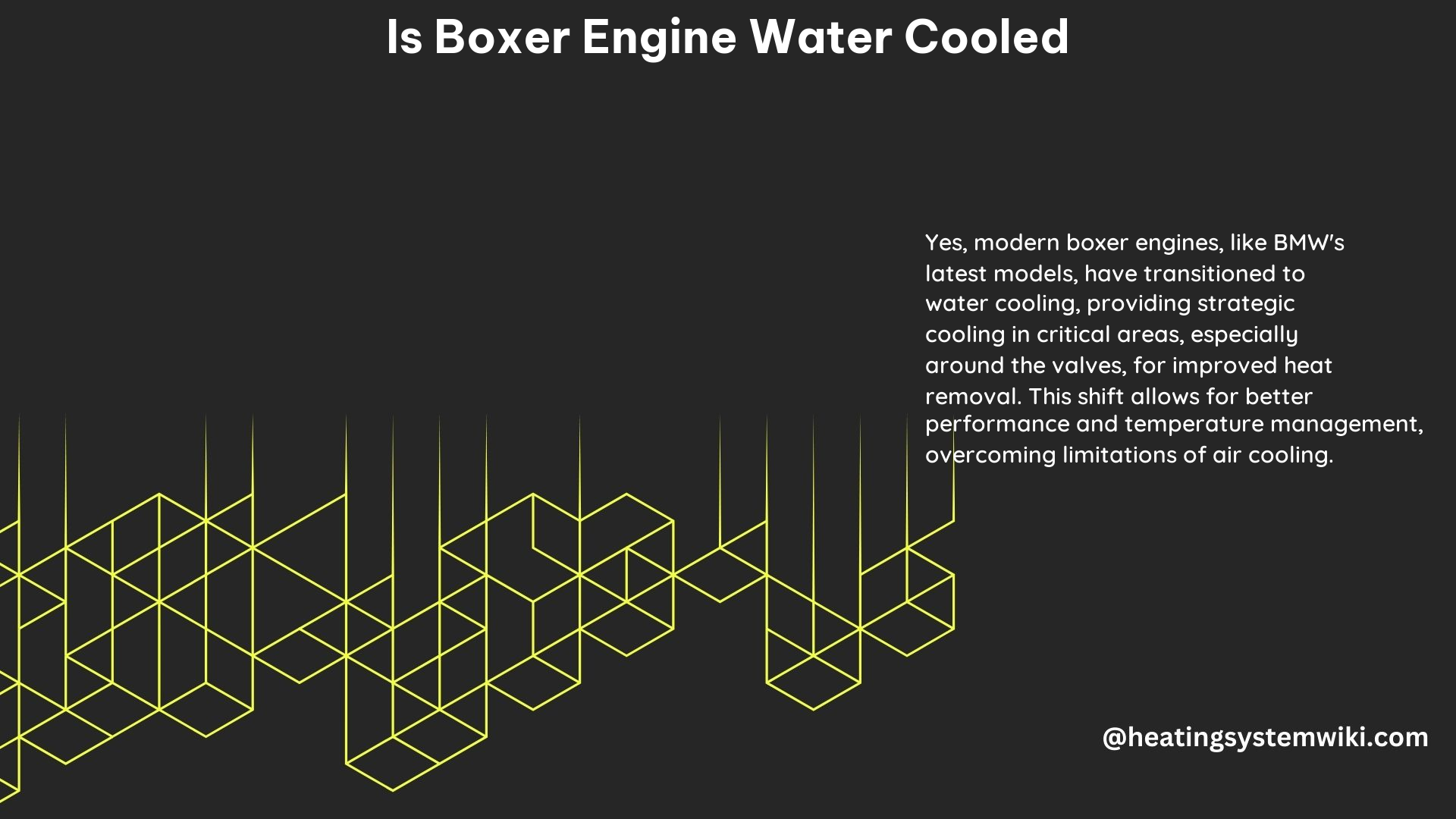Boxer engines, also known as “flat” or “horizontally-opposed” engines, are a unique engine configuration that has been used in various motorcycles and automobiles. While traditionally air-cooled, these engines can also be designed with a water-cooling system, offering improved temperature management and performance in certain applications.
Understanding the Boxer Engine Design
Boxer engines are characterized by their horizontally-opposed cylinder arrangement, where the pistons move in opposite directions. This unique layout provides several advantages, including:
- Balanced Design: The opposing pistons create a natural balance, reducing vibrations and improving engine smoothness.
- Compact Packaging: The flat design of the boxer engine allows for a lower center of gravity, which can be beneficial for vehicle handling and stability.
- Cooling Efficiency: The exposed cylinder heads in a boxer engine can be effectively cooled by air, making air-cooling a viable option.
Water Cooling in Boxer Engines

While air-cooling has been the traditional cooling method for boxer engines, the introduction of water-cooling has brought several benefits:
Improved Heat Management
Water-cooled boxer engines can more effectively dissipate heat, especially in high-performance applications or in extreme temperature conditions. The water-cooling system is designed to target the most critical areas, such as the valve train, ensuring optimal temperature control.
Enhanced Performance
By maintaining optimal operating temperatures, water-cooled boxer engines can deliver increased power output and improved efficiency. This is particularly important in high-revving, high-load scenarios where air-cooling may struggle to keep up.
Consistent Temperature Control
Water-cooling allows for more precise temperature regulation, ensuring that the engine operates within its optimal temperature range. This can lead to improved reliability, reduced wear, and better overall engine longevity.
Adaptability to Diverse Environments
Water-cooled boxer engines are better equipped to handle extreme environmental conditions, such as high ambient temperatures or prolonged operation in heavy traffic. The water-cooling system can effectively dissipate heat, preventing overheating and maintaining consistent performance.
Examples of Water-Cooled Boxer Engines
BMW Motorcycles
BMW has been at the forefront of water-cooled boxer engine technology in the motorcycle industry. Their R1200GS and R1250GS models, introduced in 2013 and 2018 respectively, feature advanced water-cooled boxer engines that have become a hallmark of the brand.
These engines are designed with a focus on heat management, with the water-cooling system targeting the critical areas around the valves. This allows for improved performance, reduced maintenance, and enhanced reliability, especially during extended periods of operation in demanding conditions.
Volkswagen Automobiles
In the automotive realm, Volkswagen has a history of using water-cooled boxer engines in their T3 Transporter, Caravelle, and Vanagon models from 1982 to 1992. These engines, known as “wasserboxers,” were offered in 1.9 and 2.1-liter displacements and featured advanced design elements, such as:
- Aluminum cylinder blocks, cylinder heads, and pistons for reduced weight
- Single central camshaft with three supports and two valves per cylinder for improved efficiency
- Sophisticated water-cooling system for effective heat dissipation
The use of water-cooling in these Volkswagen models allowed for better temperature management, increased power output, and improved overall performance compared to their air-cooled predecessors.
Advantages and Disadvantages of Water-Cooled Boxer Engines
Advantages
- Improved heat management and temperature control
- Enhanced performance and power output
- Increased reliability and reduced wear in high-load or extreme conditions
- Adaptability to diverse environmental conditions
Disadvantages
- Increased complexity and weight compared to air-cooled designs
- Higher manufacturing and maintenance costs due to the water-cooling system
- Potential for coolant leaks or other cooling system-related issues
Conclusion
Boxer engines, with their unique design and inherent balance, have long been a popular choice in both the motorcycle and automotive industries. While traditionally air-cooled, the introduction of water-cooling has brought significant benefits in terms of heat management, performance, and reliability.
As technology continues to evolve, the use of water-cooled boxer engines is likely to become more prevalent, especially in high-performance and demanding applications. Understanding the advantages and disadvantages of this configuration is crucial for both enthusiasts and industry professionals alike.
